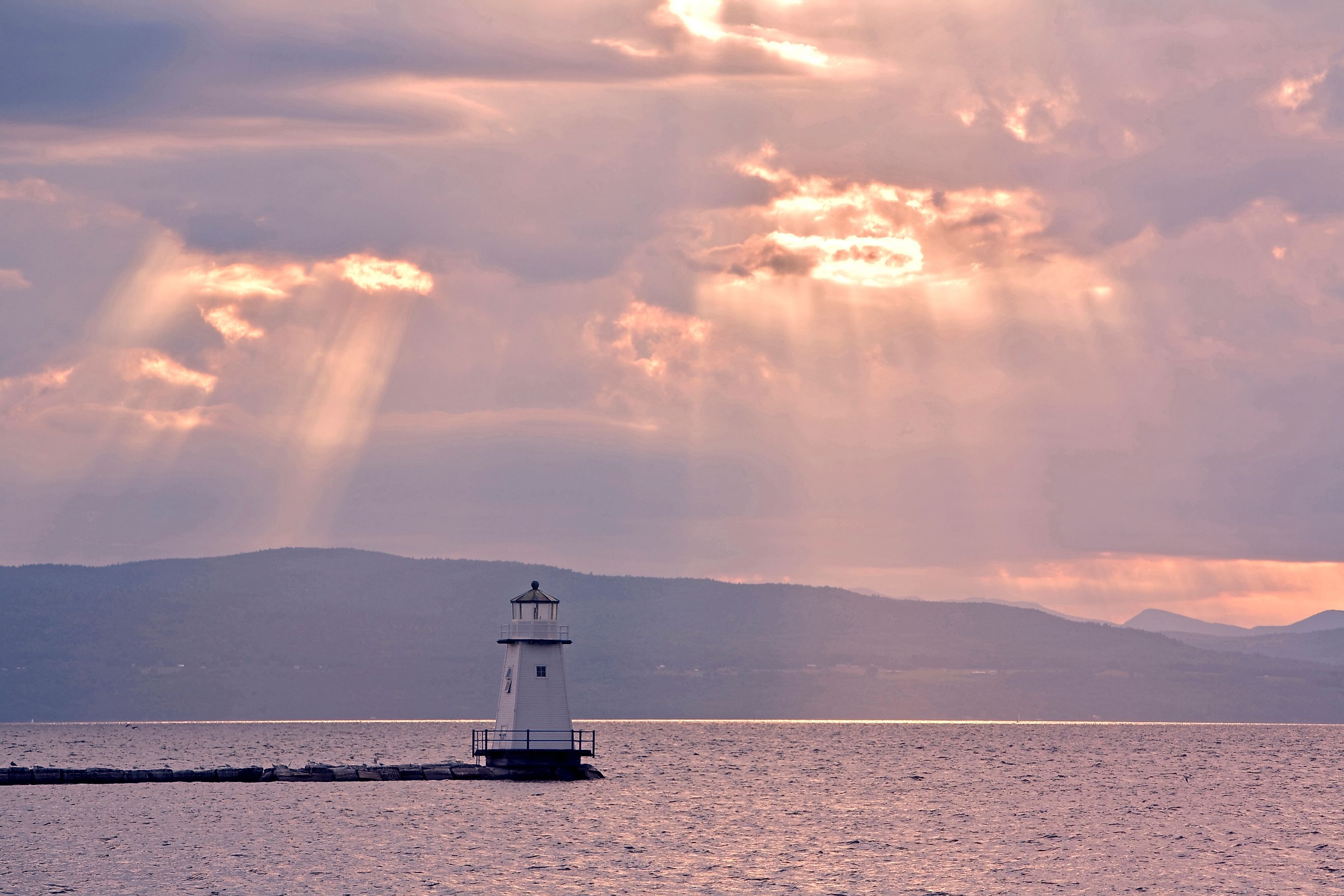
Lake Champlain
Lake Champlain has served as an important body of water in the northeastern region of the United States, both ecologically, historically, and commercially. With its large size and connection to the Saint Lawrence River, it is sometimes referred to unofficially as one of the Great Lakes. What was once a border between nations, a highway to transport goods in and out of the hinterlands of North America, and even a site of several battles, today, the relatively under-developed shores of Lake Champlain make it a popular vacation destination for those who want to escape for a weekend or two onto its pristine waters.
History
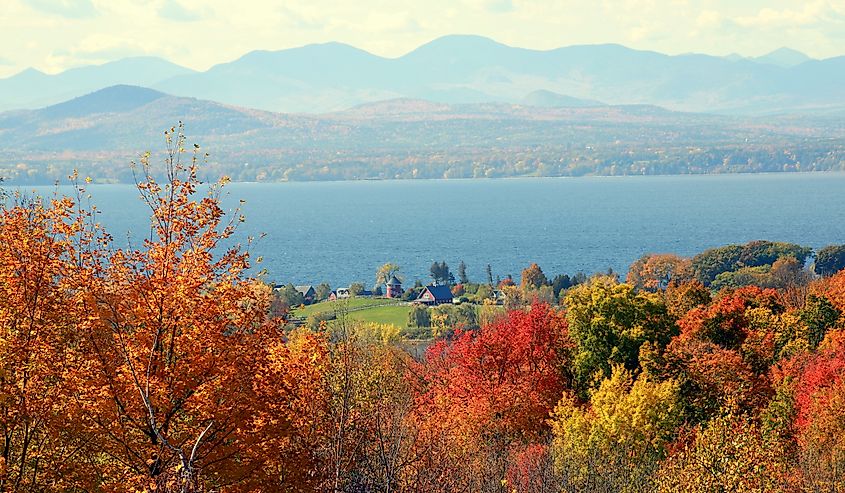
Lake Champlain is named after the French explorer Samuel do Champlain, who was the first European to lay eyes on it in the year 1609. Prior to his discovery, this lake was an important hub for various Algonquin and Iroquois tribes, often being a territorial border between the two. One of the several names Lake Champlain has gone under is Pitawabagok, which is a Wanab-aki word that appropriately translates roughly to "middle lake." The Indigenous peoples also used this lake as an important fishing spot and a quick mode of transportation around the region, as many who came after them continue to do to this day.
After Champlain's arrival, Lake Champlain became one of the main routes for settlers to get in and out of what is now the Hudson Valley in central New York State. It was vital for the fur trade, and thus, several forts were also established along its shores, like Fort Ticonderoga, a site that can still be explored today. Lake Champlain also played a significant role in both the Revolutionary War and the War of 1812, with it being the site of several battles and acting as a waterway to transport troops and supplies.
With the construction of the Champlain Canal in 1823, which connected the lake to the Hudson River, Lake Champlain became a vital trade route between Canada and the United States by allowing goods to arrive more quickly from up north to major metropolises like Albany and New York City. Today, the lake primarily serves as a recreational destination, with many parks and cottage communities being in and around the vicinity of this visually striking natural gem.
As with many large bodies of water, Lake Champlain has developed its fair share of legends over the centuries, the most popular of which involves the cryptid popularly known as "Champ," a Loch Ness monster-esque lake monster with countless alleged sightings.
Geography
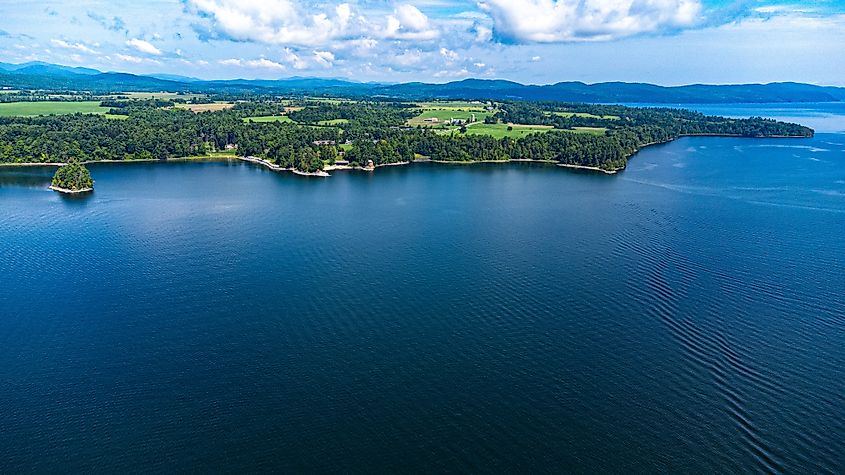
Lake Champlain is located on the northern edges of the border between the states of Vermont and New York and even reaches slightly across the Canadian border into the province of Quebec at its northern tip. It is about 172 km long and 23 km across at its widest point, with nearly 950 km of shoreline. It covers a total surface area of 1,131 km square, making it the thirteenth biggest lake in America (by surface area), and has a maximum depth of 122 meters, with it having an average depth of just 19.5 meters.
This lake is in the Champlain Basin (also known as the Champlain Valley), which is sandwiched between two prominent mountain ranges: the Green Mountains on the Vermont Side and the Adirondack Mountains on the New York Side. It drains northward into the Saint Lawrence River, a river that ultimately drains into the Atlantic Ocean itself.
The Lake Champlain area follows the typical weather patterns that are found in the northeast, with warm humid summers and winters that are cold enough to usually freeze portions of the lake. Although not common due to its large size, Lake Champlain has been known to completely freeze over during the winter months.
The Champlain basin contains a variety of different landscapes and biomes, including sandy beaches, cobble shores, marshes, swamps, bogs (or muskeg), bluffs, and floodplain forests, all of which are home to a variety of plants and animals.
Flora and Fauna
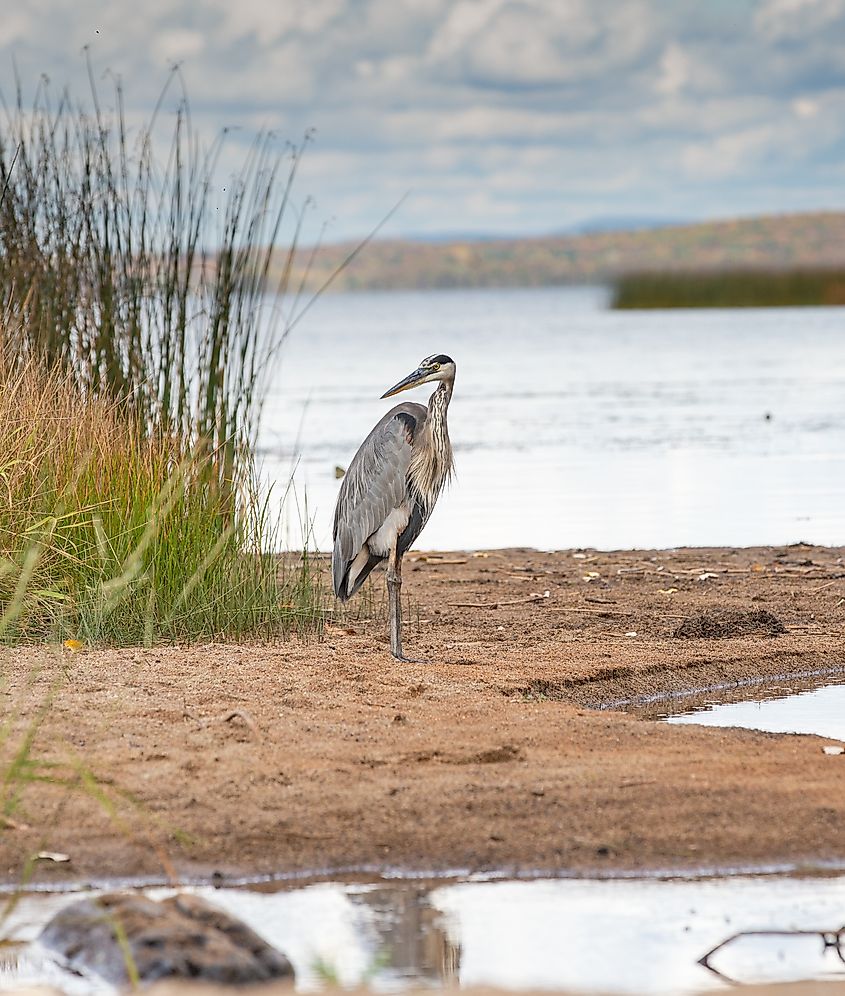
Lake Cahamplain is home to a large and diverse array of plants, animals, and wildlife. Notable populations of amphibians, reptiles, birds, fish, mammals, and invertebrates can all be found here.
Being a hugely popular destination for fishing, both for sport and food, there are 93 species of fish that live in the waters of Lake Champlain. Fish species include smallmouth and largemouth bass, northern pike, pickerel, channel catfish, landlocked Atlantic salmon, various types of trout, and many more. Bird watching is a popular activity, mainly in the parks around the lake, and a wide selection of commorants are known to live here. Terns, loons, and over 300 species of other birds also breed, overwinter, or visit Lake Champlain.
Many mammals live in the dense forests in the Cahamplain basin, like bats, deer, moose, black bears, squirrels, beaver, and several other herbivores, carnivores, and omnivores. With many rivers and streams feeding into the lake, over 20 species of amphibians, like salamanders and frogs, and 19 species of reptiles can be spotted, like snakes, skinks, and turtles.
The land around Lake Champlain is filled primarily with forests and an assortment of wetlands like swamps, bogs, and floodplains forests. Trees that have been identified here mainly include maples, various pines, ash, and cedar, the last of which thrive in the water-rich environments that are common here. Aquatic plant communities that are actually within the lake include American Eelgrass, pond lilies, common waterweed, pondweed, and other native and invasive plants.
Both the flora and fauna of Lake Champlain, as with many natural areas around the country, are usually under threat from human activity and development, and a number of efforts are being taken in this area at both the state, federal, and municipal levels to protect the wildlife here.
Major Towns and Cities
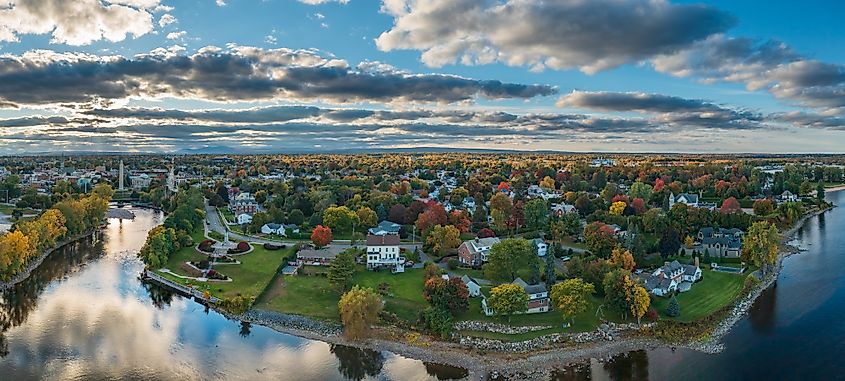
Around 600,000 people live permanently on the shores of Lake Champlain, with 500,000 on the American side and 100,00 on the Canadian side. Being a body of freshwater this large, it is notable that Lake Champlain does not have any major cities on its shores, with Burlington on the Vermont side being the biggest with a population of only around 45,000 residents. Other towns and cities found here include Plattsburgh (the second biggest city on the lake, with a population of around 20,000 people), St. Albans, Westport, Ticonderoga, Whitehall, Rouses Point, and Saint-Jean-sur-Richelieu on the Canadian side.
Economy
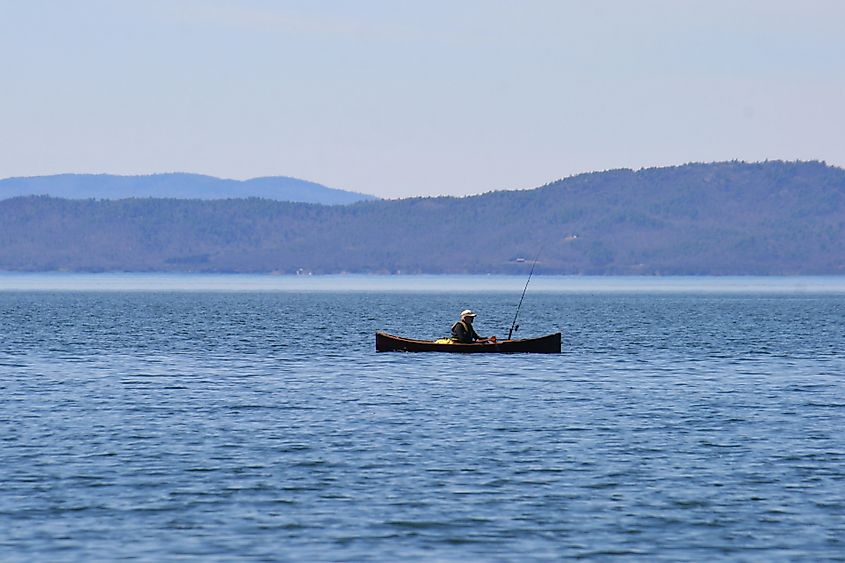
Lake Champlain and its surrounding cities and towns have undergone a variety of changes to its economy throughout the many centuries of human occupation here. Having started as an important trade hub for both the native populations and the fur traders who hunted the lands of North America, agriculture in the fertile soils of the Champlain Basin eventually became a staple as permanent settlements began popping up. Dairy farms, orchards, and vineyards are still mainstays to this day, providing the area with fresh food, and produce that is shipped throughout the world.
Fishing is a major source of income for Lake Champlain, with many of the lake's fish species harvested by both commercial and tourist operations. With shipping easily able to come in and out of the lake, connecting the region to both New York City and the Atlantic Ocean, manufacturing was also a major part of the economy of Lake Champlain. However, with outsourcing and modern environmental protection policies, the presence of factories and other manufacturing infrastructure here has shrunk considerably.
Today, tourism makes up a massive part of its economy, and it is hard to ignore why this is the case. With many picturesque parks having been established at or near the shores of Lake Champlain, it has become a hot spot for outdoor adventures or those simply looking to relax by the water. Be sure the pay a visit to popular parks such as Mount Philo, Alburg Dunes, Grand Isle, Split Rock, Missisquoi National Wildlife Refuge, and more. With boating, swimming, hiking trails, camping, beaches, and cottages (both for sale and for rent) being available in and around the towns and parks of Lake Champlain, there is something for everyone here during the summer months, not to mention the plethora of ski resort in the Green and Adirondack Mountains nearby.











